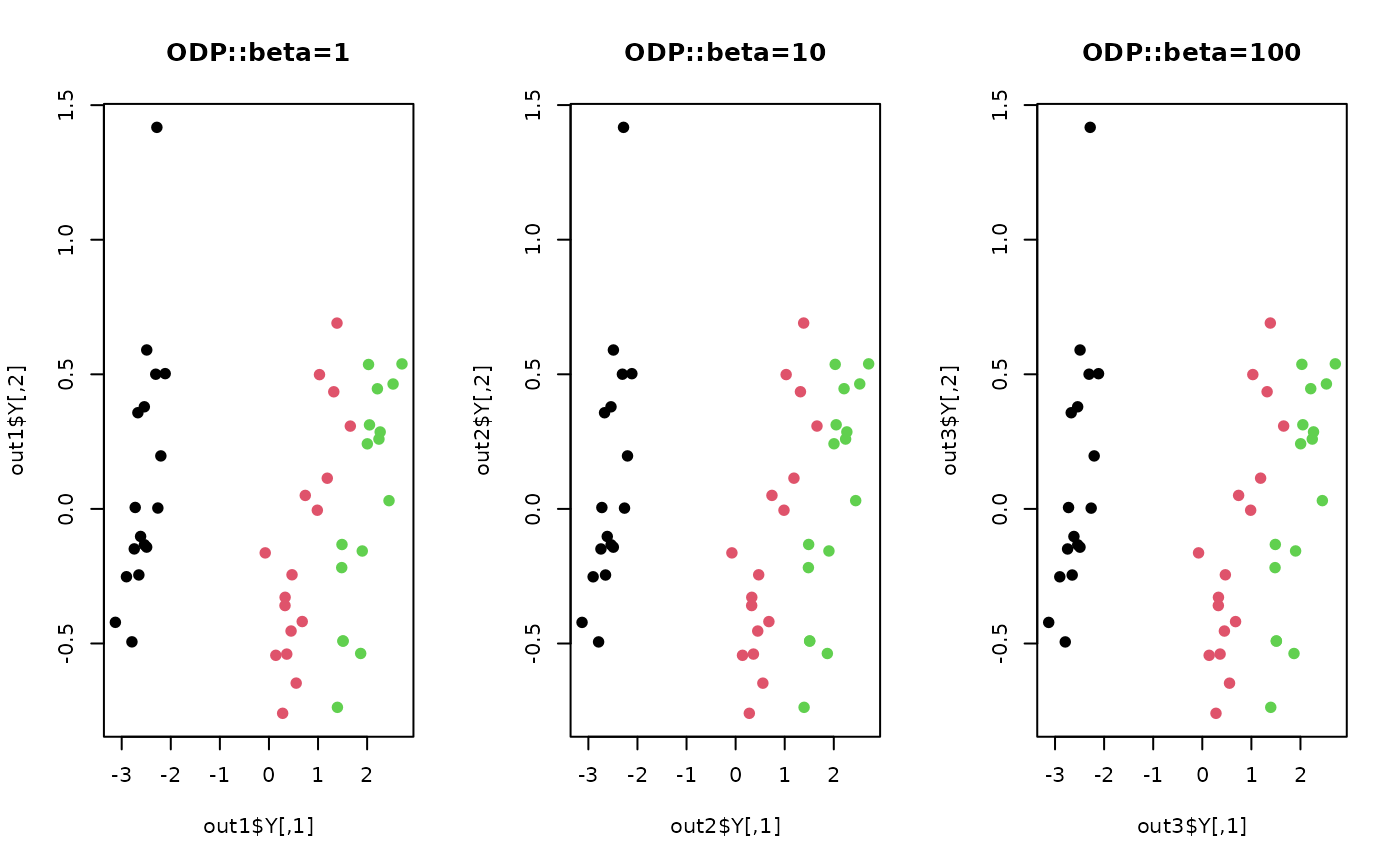Orthogonal Discriminant Projection (ODP) is a linear dimension reduction method with label information, i.e., supervised. The method maximizes weighted difference between local and non-local scatter while local information is also preserved by constructing a neighborhood graph.
Arguments
- X
an \((n\times p)\) matrix or data frame whose rows are observations and columns represent independent variables.
- label
a length-\(n\) vector of data class labels.
- ndim
an integer-valued target dimension.
- preprocess
an additional option for preprocessing the data. Default is "center". See also
aux.preprocessfor more details.- type
a vector of neighborhood graph construction. Following types are supported;
c("knn",k),c("enn",radius), andc("proportion",ratio). Default isc("proportion",0.1), connecting about 1/10 of nearest data points among all data points. See alsoaux.graphnbdfor more details.- symmetric
one of
"intersect","union"or"asymmetric"is supported. Default is"union". See alsoaux.graphnbdfor more details.- alpha
balancing parameter of non-local and local scatter in \([0,1]\).
- beta
scaling control parameter for distant pairs of data in \((0,\infty)\).
Value
a named list containing
- Y
an \((n\times ndim)\) matrix whose rows are embedded observations.
- projection
a \((p\times ndim)\) whose columns are basis for projection.
- trfinfo
a list containing information for out-of-sample prediction.
References
Li B, Wang C, Huang D (2009). “Supervised Feature Extraction Based on Orthogonal Discriminant Projection.” Neurocomputing, 73(1-3), 191--196.
Examples
## use iris data
data(iris)
set.seed(100)
subid = sample(1:150, 50)
X = as.matrix(iris[subid,1:4])
label = as.factor(iris[subid,5])
## try different beta (scaling control) parameter
out1 = do.odp(X, label, beta=1)
out2 = do.odp(X, label, beta=10)
out3 = do.odp(X, label, beta=100)
## visualize
opar <- par(no.readonly=TRUE)
par(mfrow=c(1,3))
plot(out1$Y, col=label, pch=19, main="ODP::beta=1")
plot(out2$Y, col=label, pch=19, main="ODP::beta=10")
plot(out3$Y, col=label, pch=19, main="ODP::beta=100")
 par(opar)
par(opar)